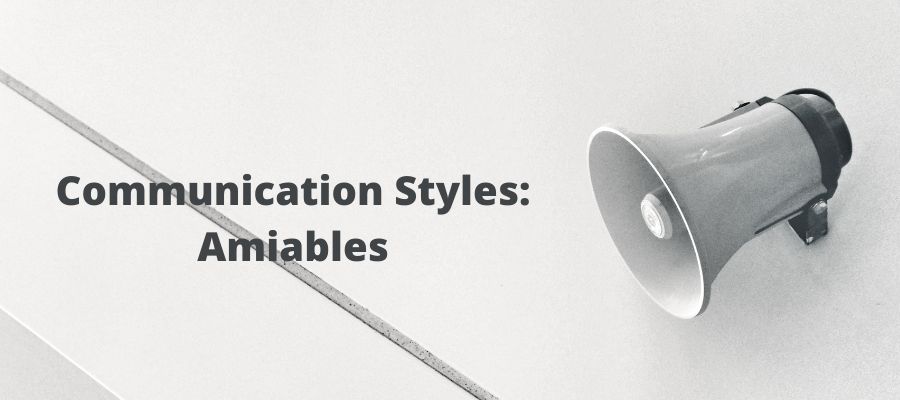Competent about Communication Styles? All about those Amiables!
In the previous post, we continued to work on our people skills. We focused on Analyticals and how they can communicate more effectively with Drivers, Expressives, and Amiables. If you haven’t yet identified your communication style profile, go back and read the first post, “Competent about Communication Styles?” to determine your communication style and the style of those you work with. Today we’re focusing on the Amiable communication style and how it can adapt to Drivers, Analyticals, and Expressives. Check out these helpful tips to improve your people skills and your communication with others!
How AMIABLES can Adapt to ANALYTICALS

1. Be more task-oriented: be on time, get right to business, maintain a somewhat reserved demeanor
2. De-emphasize feelings: decrease eye contact, limit facial expressiveness, avoid touch, don’t upset yourself over the Analytical’s impersonal or unfeeling manner
3. Be Systematic: set high standards, plan your work, work your plan, develop superior procedures
4. Be well-organized, detailed, and factual: be prepared, go into considerable detail, provide accurate factual evidence, stick to business
How AMIABLES can Adapt to EXPRESSIVES
1. Pick up the pace: Move more quickly than usual, be prepared to decide quickly, respond promptly to messages and requests, expect the hurry-up-and-wait phenomenon
2. Demonstrate higher energy: Maintain erect posture, use gestures to show involvement in conversation, increase vocal intensity, increase frequency and intensity of eye contact
3. Focus on the big picture: concentrate on high-priority issues, present main points and main details well,
4. Say what you think: speak up more often, tell more; ask less, eliminate gestures that suggest you lack confidence in the point you are making, voice your disagreements
5. Facilitate self-determination: give Expressives as much freedom as possible in achieving their visions, don’t be a stickler for rules
How AMIABLES can Adapt to DRIVERS
1. Pick up the pace: Move more quickly than usual, be prepared to decide quickly, respond promptly to messages and requests, expect the hurry-up-and-wait phenomenon
2. Demonstrate higher energy: Maintain erect posture, use gestures to show involvement in conversation, increase vocal intensity, increase frequency and intensity of eye contact
3. Be more task-oriented: be on time, get right to business, maintain a businesslike demeanor
4. De-emphasize feelings: decrease eye contact, limit facial expressiveness, avoid touch, don’t upset yourself over the Analytical’s impersonal or unfeeling manner
5. Be clear about your goals and plans: engage in goal setting, set stretch goals, plan your work
6. Say what you think: speak up more often, tell more; ask less, make definite statements rather than tentative
7. Don’t gloss over problems: give regular, brief, honest reports on your progress
8. Cut to the chase: concentrate on high-priority issues, present the main points and skip all but the most essential details
9. Be well organized in your communication: be prepared, have a well-organized presentation, focus on the results
References: Bolton, B. & Grover Bolton, D. (2009). People Styles at Work and Beyond, Second Edition. New York, NY: Ridge Associates, Inc.
You’re a communication expert. Why is it often so challenging to communicate productively with colleagues and parents? Because you’re human, and effective communication, like any other acquired skill, must be explicitly learned. Check out this course:







